Simplicity is key to the success of community exercise Parkrun
Have you made a new year’s resolution to get fit but don’t know where to start? Then you should try Parkrun. After all, six million people can’t be wrong, explains David Barnett

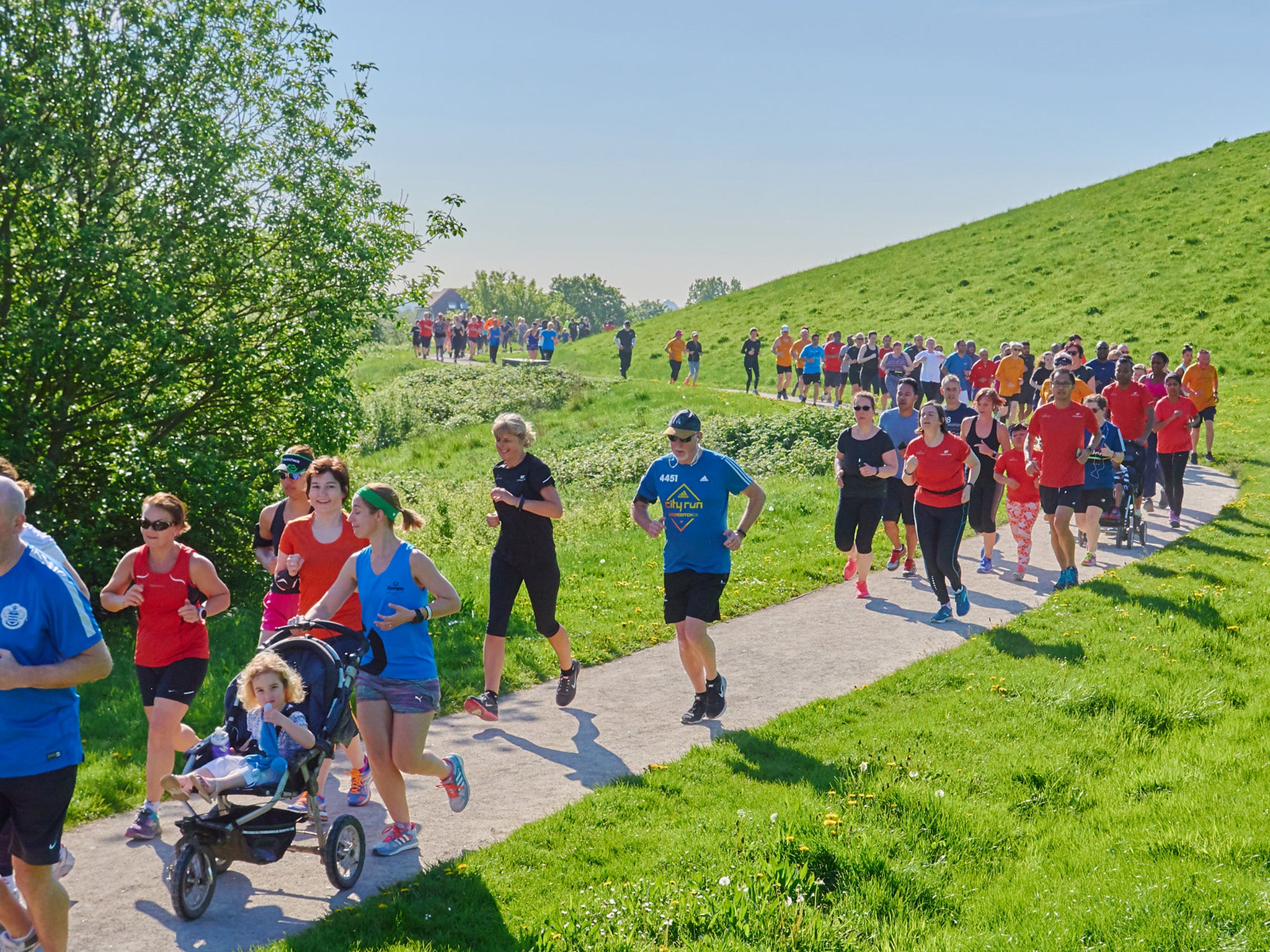
At nine o’clock every Saturday morning, come hail or shine, at a park or public space near you, people are gathering to take part in one of the most astonishing exercise phenomenons of the 21st century. Parkrun is breathtaking in its simplicity. You turn up, you run – or jog, or walk – a 5km course. Then you go home. It doesn’t cost you anything, you don’t need the latest expensive kit. But the benefits to your physical health, your mental health and even your local community, are almost immeasurable.
The very first Parkrun took place just over 15 years ago, on 2 October 2004, at Bushy Park in London. Then there were five volunteers and 13 runners. Now there are more than 2,000 Parkrun events taking place in 21 countries. Six million people have registered for the runs, more than half a million have volunteered, and week in, week out there are usually more than 350,000 people lacing up their trainers and pounding the paths at 9 o’clock sharp on Saturday mornings.
Out of so many participants, you’d expect some amazing stories, and you’d be right. Take Dan Woodgate, for example. Back in October 2016, the death of his father forced Dan to look at his own health and lifestyle. And what he saw worried him. The father of two young children, he weighed 27 stone and lived mainly on a diet of junk food and booze, and didn’t do any exercise.
Deciding things had to change, he began a strict diet but wanted to supplement his weight loss with a more active lifestyle, and on social media began to notice that people were talking about a Parkrun not far from where he lived in Stockton-on-Tees. He registered online and decided he would go along and take a look. Dan says, though: “The day before, however, I knew that just watching wouldn’t lose me any weight, so I prepared myself to take part.”
Dan’s wife and children came to watch him take part in his first Parkrun in August 2017. He part ran/part walked it in just under 42 minutes. He recalls: “I was exhausted yet overwhelmed with satisfaction and achievement. The volunteers and other runners at the event couldn’t have been more friendly and welcoming, I instantly felt at ease – nobody cared that I was more than 20 stone. I was emailed my results and I couldn’t wait for next week to see how I would fare.”
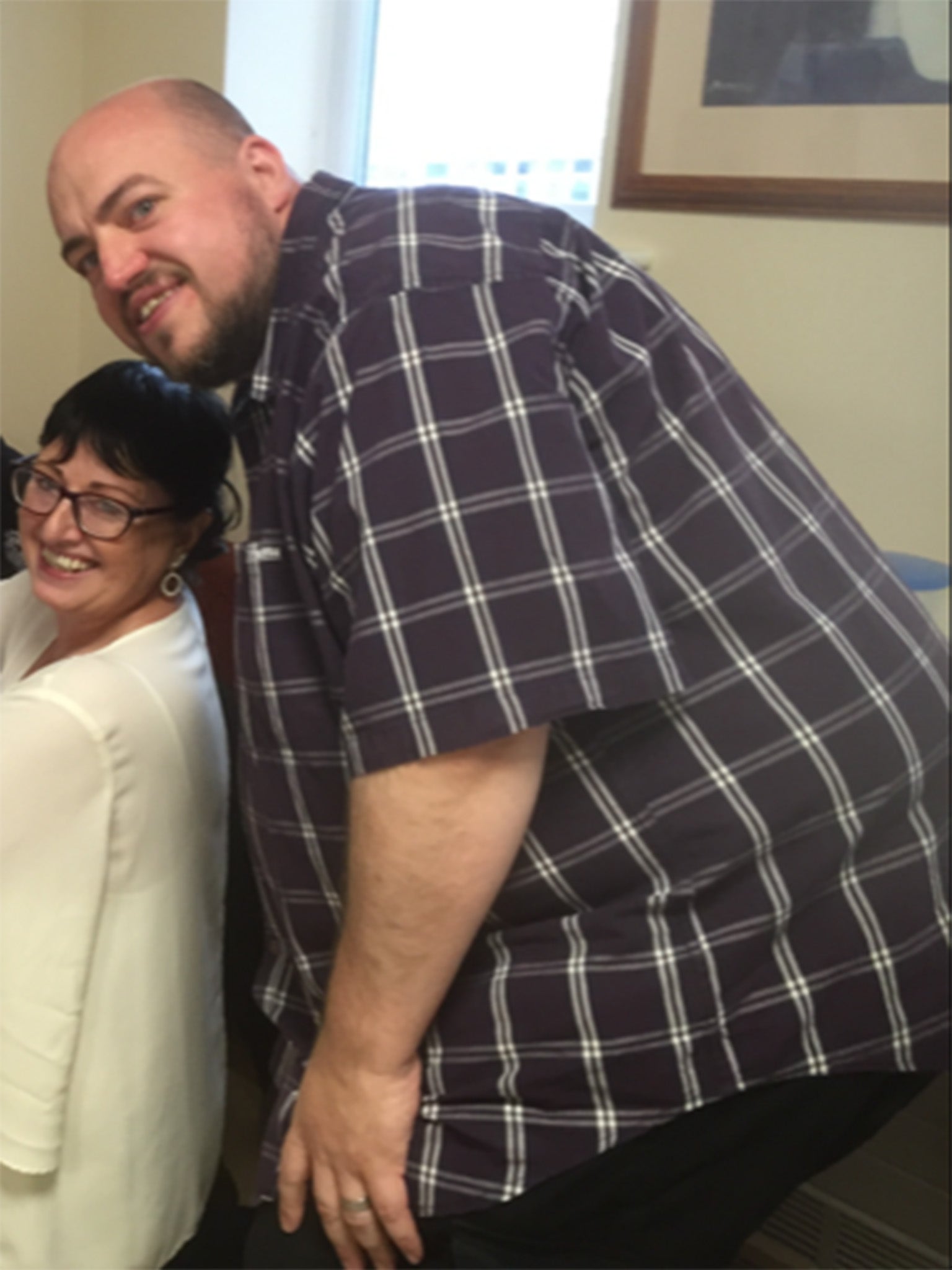
In the two-and-a-half years since then Dan has more than halved his body-weight to 13.5 stone, and has taken part in the Great North Run (where he raised money for the hospice that cared for his father). And just over a year after taking part in his first Parkrun he entered his first marathon in Lucerne, Switzerland… and finished with a time of four hours 54 minutes.
Not everyone’s reversal of health fortunes is as dramatic as Dan’s, but others’ stories are no less of an achievement for that… and are possibly more relatable for many more people. Take Gail Seal, who was feeling generally unfit and a little overweight after the birth of her second child. She also suffered from a lack of confidence, and when she heard about Parkrun her first reaction was that she would never be able to run 5K. Indeed, it took her a further year to pluck up the courage to investigate her local Parkrun in Walthamstow, London, and to realise: “I saw very quickly that my worries were for nothing.”
Gail recalls: “Yes there were speedy runners, but there were all kinds of different types of runners; mums with their children, guys pushing babies around in buggies, the run/walkers, the tail walker at the back making sure nobody gets left behind.
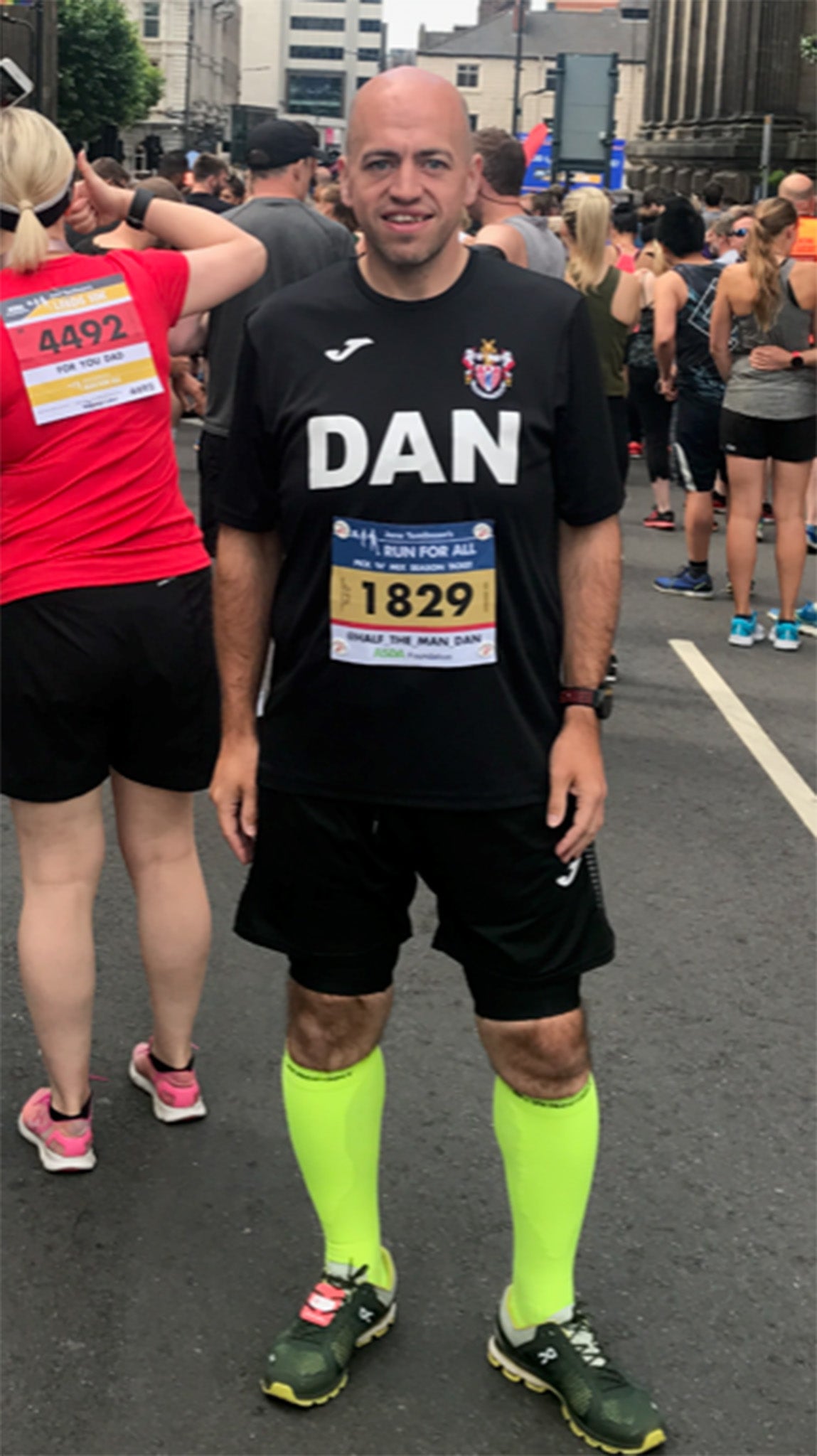
Yes there were speedy runners, but there were all kinds of different types of runners; mums with their children, guys pushing babies around in buggies, the run/walkers, the tail walker at the back making sure nobody gets left behind
“As I struggled up the hill a marshal shouted out that I ‘looked strong’ and that I ‘could do this!’ and I was overwhelmed by her kindness.
“I finished that first Parkrun in around 36 minutes, and immediately knew that I had to go back the next week to try and beat my time. I loved seeing the results stack up against my name on the website, and the text congratulating me if I managed to get a personal best!”
Although the physical benefits of Parkrun are obvious, there are other positives to; and they apply to mental health as much as physical health. As far as Jenny Allwright is concerned, Parkrun completely changed the life of her son Owen.
Owen has learning difficulties and Jenny found it difficult to get him motivated, or even out of bed in the mornings, his mental health not helped by the death of his dad some years ago. Owen surprised Jenny one day by saying, as they were watching the Manchester 10K run on TV, that he would like to take part and raise money for charity. So Jenny looked into it and they checked out a local Parkrun in Stretford, Manchester. Jenny says: “He loved his first Parkrun right from the start. He had to walk part of the route but made it round no problems.
“After about four weeks, we started going to Wythenshawe Parkrun, who from the word go made Owen feel so welcome. He is always so excited coming over the finish line. It’s like getting an Olympic medal every week. He always gets a great cheer.
“He has now completed three Manchester 10km runs and raised loads of money for charities close to his heart, including the Homeless Charity Barnabus, and Manchester Dogs Home as we lost our family dog recently.”
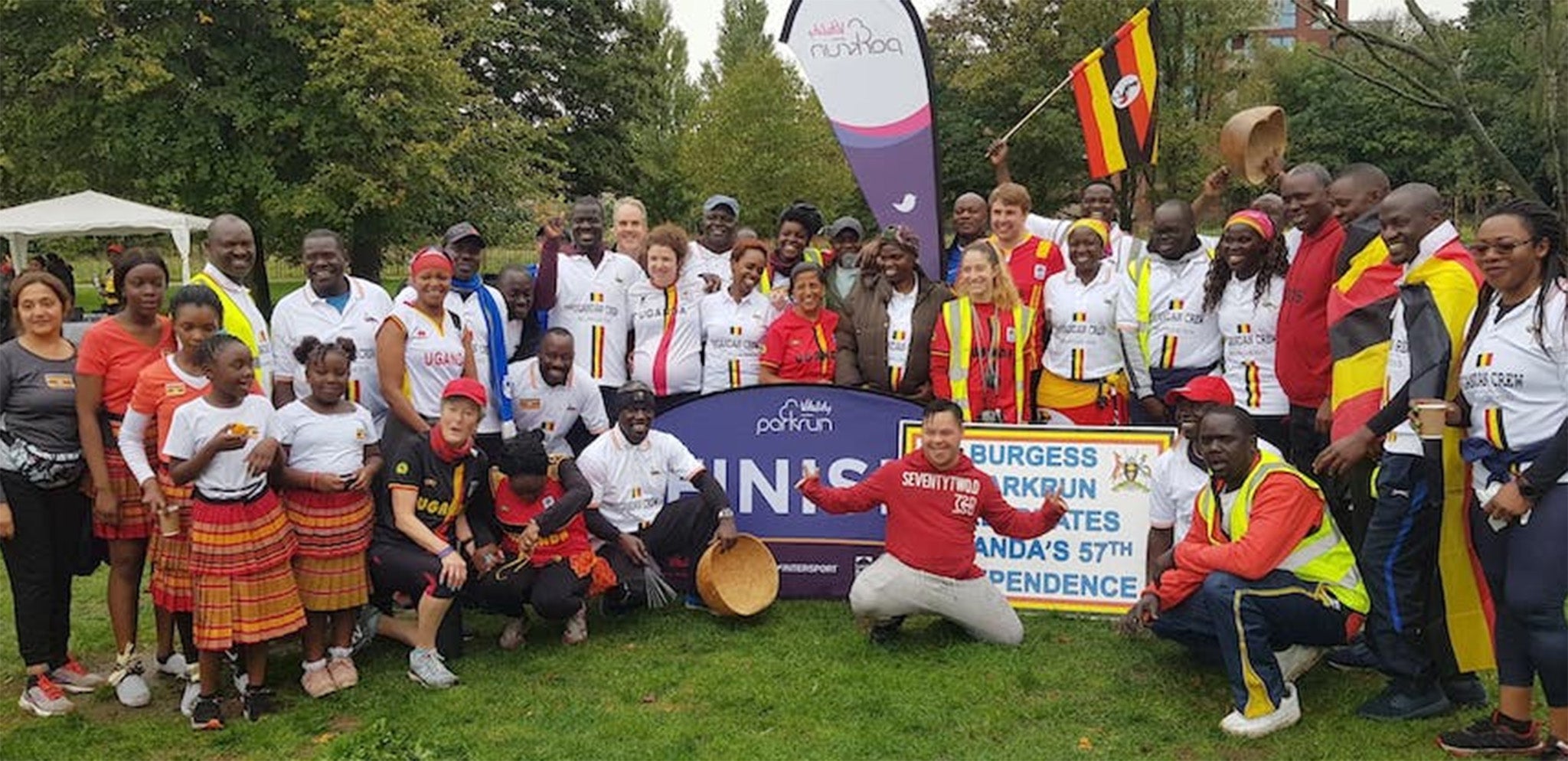
Not everyone who participates in Parkrun has, or needs, such a story, but each Saturday is a half-hour or so of triumphs large and small for hundreds of thousands of people. But perhaps the most inspiring story is that of Paul Sinton-Hewitt, without who there would be no such think as Parkrun.
Sinton-Hewitt was born in Zimbabwe and grew up in South Africa. His childhood was not what you might call idyllic; he spent most of it in boarding schools and as a ward of the state after his parents separated. But he developed a love of running from being very young; there’s perhaps a metaphor there, for Sinton-Hewitt’s childhood was marked by bullying, some of it brutal.
He moved to the UK as an adult, but suffered a breakdown in 1995. Sinton-Hewitt worked in IT programming for large banks and insurance companies, and around the mid-1990s had moved from being a consultant, which he loved, to becoming director of marketing for an American software company that covered the whole of Europe, the Middle East and Africa.
“It was a brilliant 10 years,” he says. “But I was probably moving beyond where my level of expertise was, which happens to a lot of people.’’
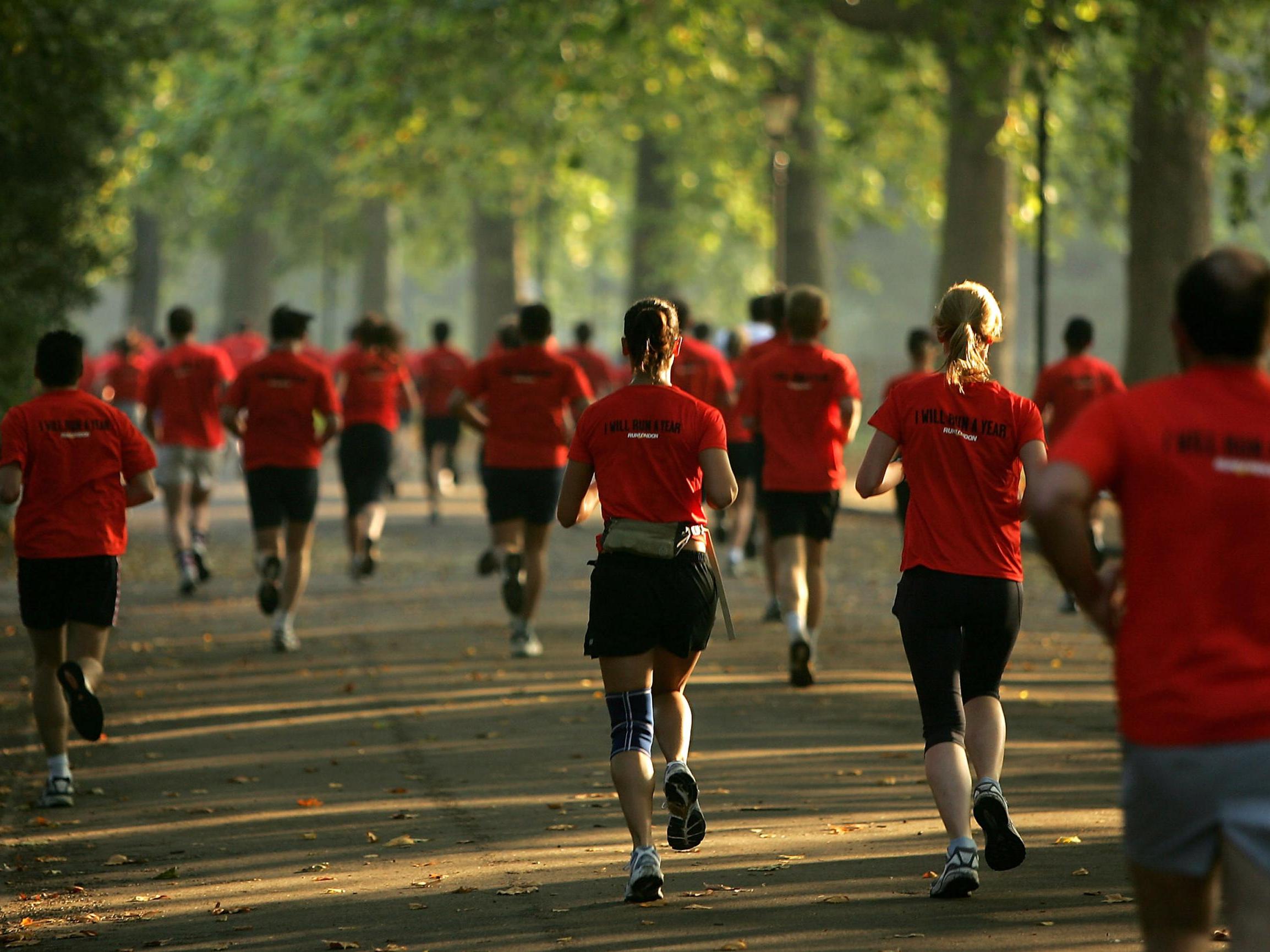
And then, in 2004, he lost his job. He also injured his leg running, and had “some other personal difficulties”. He says: “It was a tough and depressing time but the one thing that had been constant in my life was that I always had running, and when things were difficult I could just go outdoors and socialise and be in a position where I could start to return myself to good health through outdoor activities.”
Given the weight of problems that Sinton-Hewitt had in 2004, though, he found bouncing back was tougher than it normally was. He says: “I was struggling. I couldn’t run. I felt I was in a downward spiral and I was also 42, and I had this idea that I should be giving something back to the running community.”
To get himself out of his funk, Sinton-Hewitt decided to try to get some friends together for a joint run, rather than pounding the pavements alone. In South Africa he’d participated in weekly time-trials but that was something that didn’t seem to exist, or not be easily accessible, in the UK. So he decided to try to set something up himself.
Slowly the people who had done the first run started to come back, and they told their friends, and they told other people, and before you knew it we had people coming who were completely non-runners.
“Firstly, I suppose I was rather selfishly trying to organise my friends to be with me on a Saturday for a run, but equally I was hoping to help other people enjoy this format I’d experienced in South Africa.”
He approached some local running clubs but found that “generally, people weren’t warm to the idea. They thought it would take a lot of effort from a lot of people to make a public run happen in a park every week. I didn’t really get much encouragement, I was just told, ‘OK, you give it a go, see what happens’.”
So he set up an event in Bushy Park, near his home. He corralled five friends to volunteer and marshal, and they spread the word to other runner pals. There were 13 runners on the first day in October 2004. Sinton-Hewitt was happy with that. He says: “I suppose I thought between 10 and 20 people might come on a regular basis. I never expected more than that. But slowly the people who had done the first run started to come back, and they told their friends, and they told other people, and before you knew it we had people coming who were completely non-runners.
“That very first event it was a bunch of runners so it was a bit competitive, a bit of a race, but when these other people started turning up we began to say it wasn’t a race, it was for everybody. Then we said people could turn up with their dogs, pushing their buggies, whatever they wanted. And somehow people found it non-threatening, they found it simple, and as a result it just took off.”
It was two years before a friend convinced Sinton-Hewitt to set up a second run in another park, and when that was as much of a success as the first he began to realise that he had hit upon something that was capturing people’s imaginations. It was a format that could work anywhere — all you needed was a park or piece of accessible open land and a route that could cover 5km. It didn’t need to be a big park – many of the routes go over the same course three, four or five times to hit the required distance.
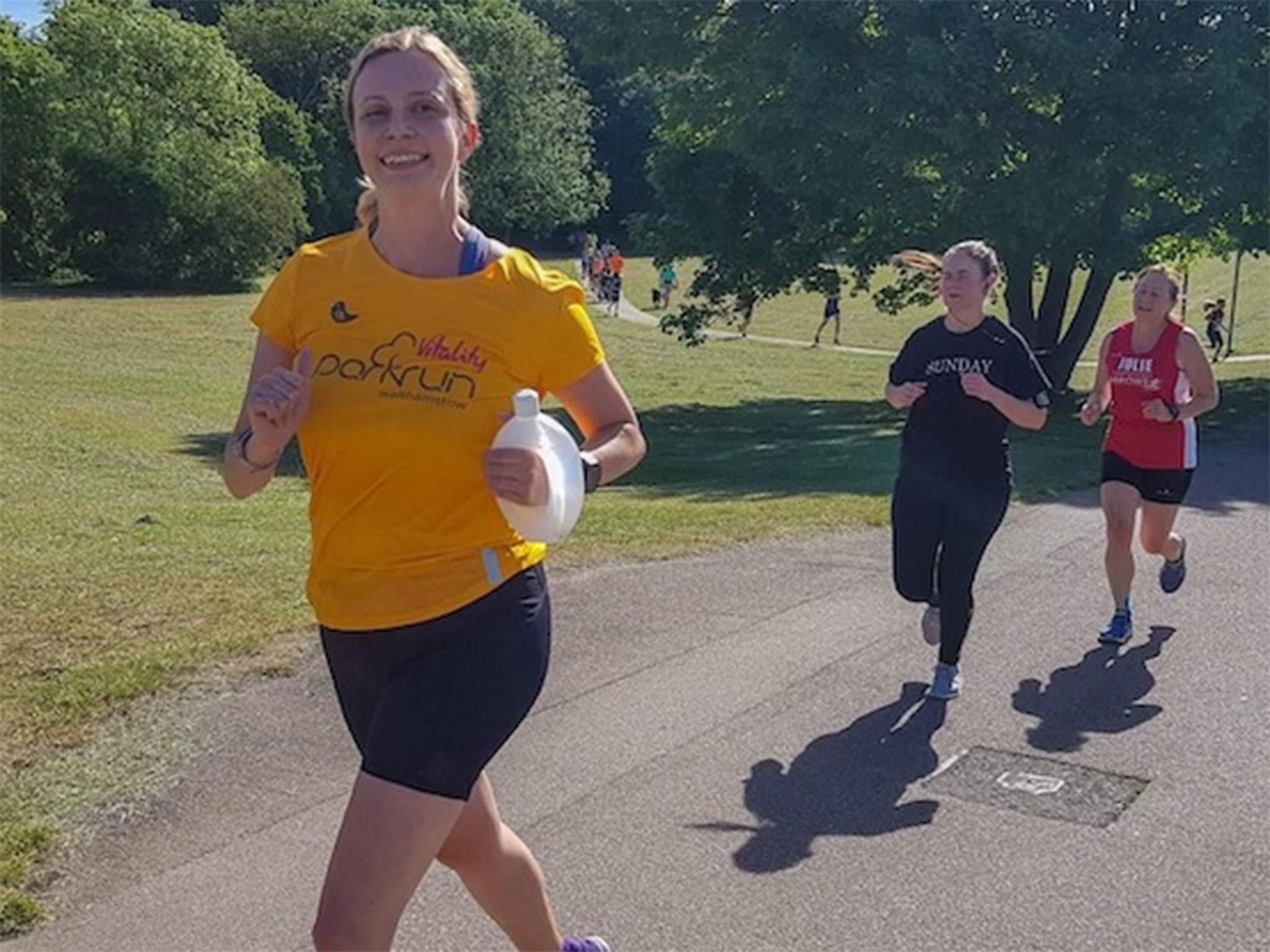
Still, Sinton-Hewitt had no great ambitions to oversee a countrywide network of Saturday morning runs. He says: “I figured it was all so easy that other people would just copy the format, which I was fine with. But people were coming to me asking if they could just be a part of what I had set up, and before I knew it two events had become seven, and then 15, and then it really took off.”
While Parkrun isn’t a race as such, healthy competition does take place… but mostly with yourself.
He says: “Every one of us is in competition with ourselves but everyone is looking for an improvement or a personal best… but we don’t get upset when it doesn’t happen. The experience of running can be a joyful one. It’s always hard work, always a difficult pursuit, but something that can give you a great deal of joy and has the power to make you feel very good about yourself.
“There’s never been a day when I went to a Parkrun and came back feeling worse. I always feel better. It’s a great experience.”
There’s never been a day when I went to a Parkrun and came back feeling worse. I always feel better. It’s a great experience
Parkrun’s growth has been an almost organic process: Sinton-Hewitt and his growing team learning first week by week, then year by year, how to refine and streamline the whole process to make it better and easier for everybody. And it’s almost a side-effect that this gathering together of amateur runners, joggers and walkers has helped to cement local communities.
He says: “The thing I’m absolutely certain about is that people are generally good and want to help their neighbour. What used to exist many years ago, the neighbourly feeling that might have been centred on a local church or whatever, that’s been eroded over the years. With Parkrun we kind of introduce the opportunity for people to not only get together as a community but actually help others, get to know people better. It’s an amazing model and I’m not saying I planned it or wrote a thesis on it, it just was something that we watched happening and saw it was something we could refine.”
Communities can mean neighbours who barely see each other because of work and busy lives, or the bringing together of different age groups and demographics in a single pursuit. A recent Parkrun in Burgess Park in South London celebrated Ugandan Independence Day, bringing the areas Ugandan community together with runners from all walks of local life.
One of the organisers, Josephine Ocaka says: I”t was an incredible turn out of 572 Parkrunners and truly beautiful to see the effort everyone made to dress in black, yellow or red. Even passersby were drawn into the festivities, some also took park in the run.
“It was a Parkrun like no other with music and dance that continued way after the run had finished. It was an amazing celebration of community and cultural unison. The cheers and festivities more than brightened a rainy Saturday morning.”
Such is Sinton-Hewitt’s contribution to firing ordinary people up into participating in sport and exercise, he was awarded the CBE in 2014. And more recently, in December 2019, he was the recipient of the Albert Medal from the Royal Society of the Arts, which is awarded every year for innovation in creativity, commerce and social improvement. In the past it has gone to Tim Berners-Lee, one of the founding fathers of the world wide web, physicist and author Stephen Hawking, and gay rights activist Peter Tatchell.
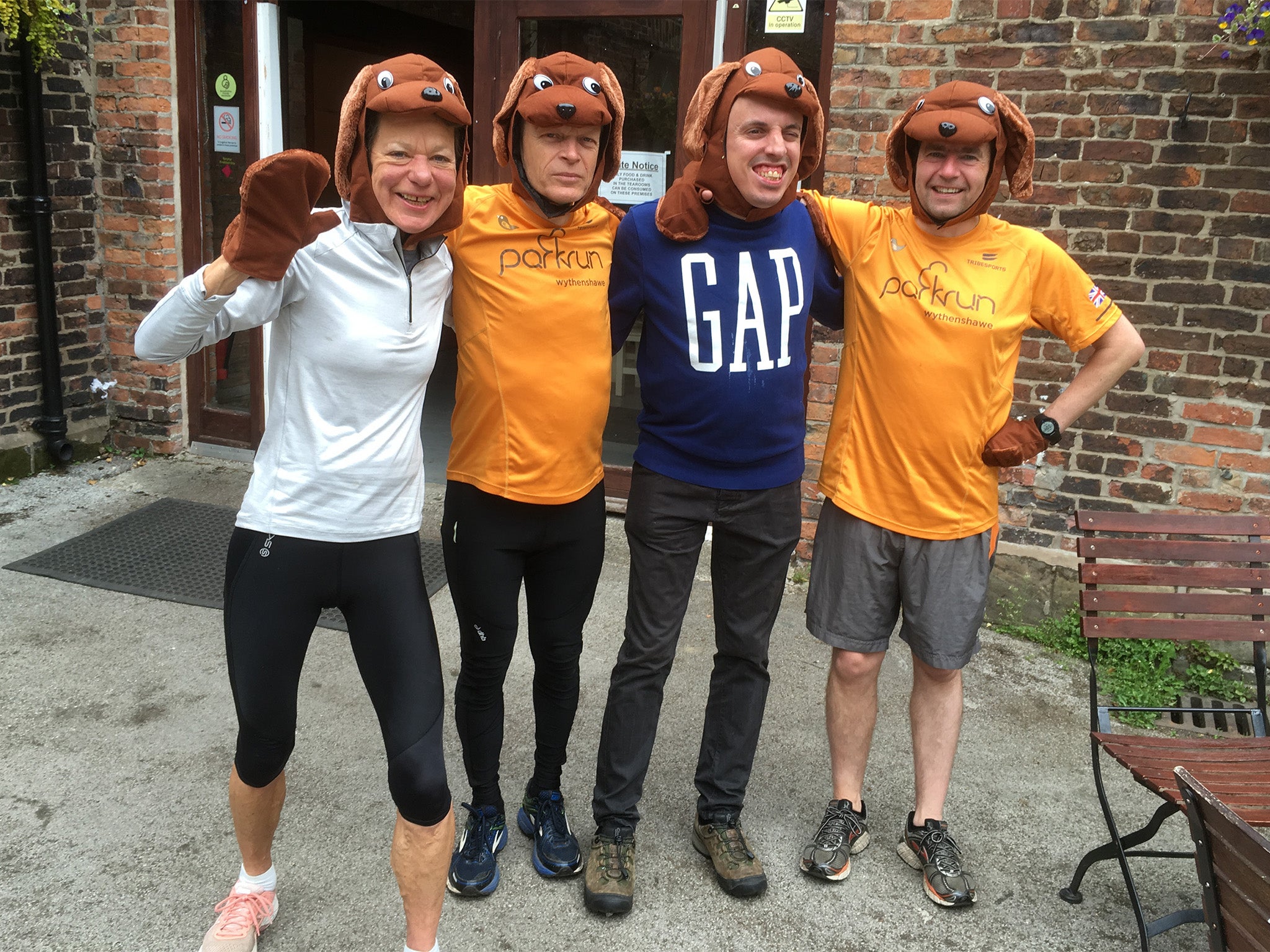
“It was a stunning, stunning honour,” says Sinton-Hewitt. “It was really something. It’s almost unique, very few people I know even knew about it prior to it being awarded and it just feels like such a big honour to be in the same list as those big names… it feels like immortality arrived long before I expected it to can’t get my head around it to be honest.”
It is, however, an award “shared by many millions of people”, says Sinton-Hewitt. Because while he of course did found Parkrun, it is the participants, the volunteers and the 43 staff members around the world who make it happen, every single Saturday.
And whenever Sinton-Hewitt does, in his own words, “start to feel sorry for myself”, he just take himself off to the nearest Parkrun (he does one, somewhere, every week) and meets the people he has inspired… and who, in turn, inspire him.
“It’s overwhelming,” he says. “I get people writing to me to tell me what adversity they’ve overcome and sometimes it’s not even that, just somebody telling me they’re now part of a community that didn’t exist for them before. They didn’t necessarily have a problem before, but now they’ve found something they didn’t even know about.
“I find it difficult to understand how my life could get any better so blessed and privileged to be part of Parkrun, this thing I didn’t plan, that just happened. I’ve been fortunate enough to be able to push it forward and make it what it is and now. I get the accolades of millions of people whose lives have been changed and I don’t know how you describe that. It’s just unbelievable.
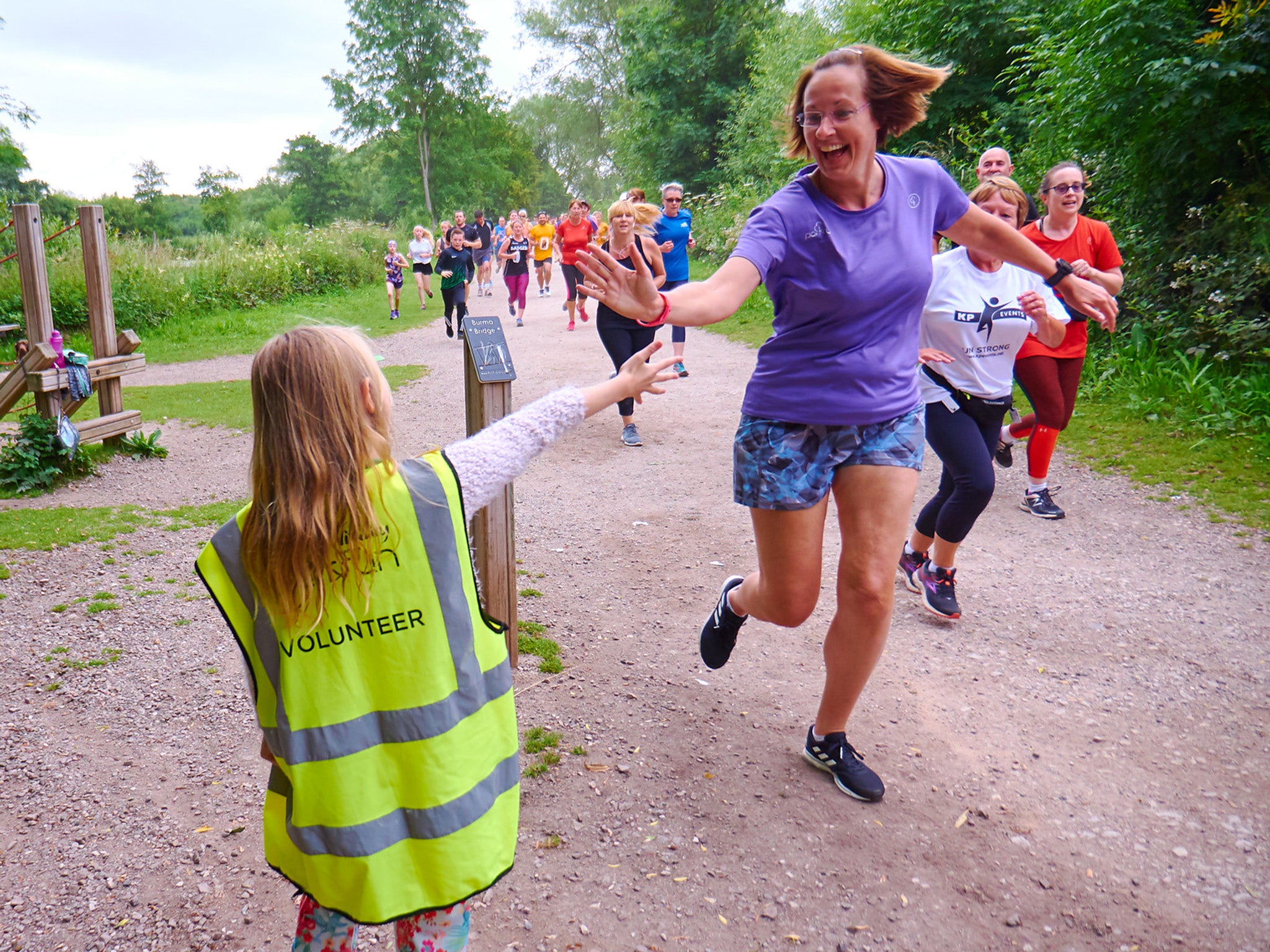
“I do Parkrun almost every week. I feel the stress of being the founder and when I go to Parkrun I’m often under pressure but always understand why people want to say hello to me and I’m always going to do the best to meet their needs with a photo and a chat, but more often than not looking someone in the eye and listening to what they have to say. It’s a very beautiful thing and it’s part of the therapy that makes me whole.”
*To find your nearest Parkrun and to register for free, go to: parkrun.com
Join our commenting forum
Join thought-provoking conversations, follow other Independent readers and see their replies
Comments